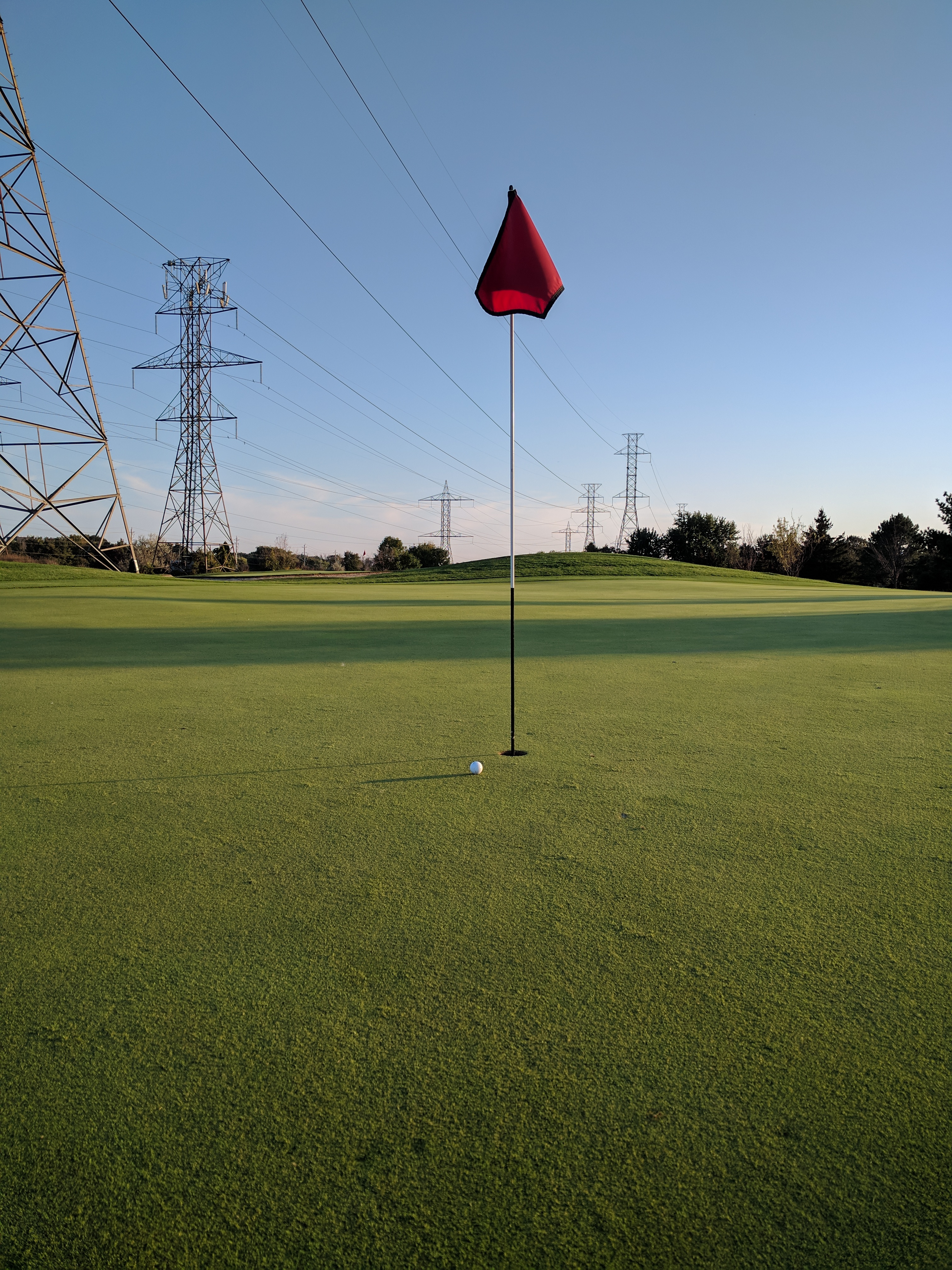First things first
I’m not going to get into choosing the right equipment, or how much time you should spend at the Range. I’m not going to tell you what part of your game you should focus on in the beginning, or how to develop a repeatable swing. I’m not going to tell you these things because I have written previous articles, and have a whole series of videos dedicated to those things already on my Cobe Life YouTube channel. What I’m actually going to do is provide you with a flowchart of sorts. A step by step guide that should help you progress as a Golfer, and minimize the number of setbacks most Beginner Golfers experience. So lets assume that you have purchased your first set of clubs, have a halfway decent swing, and can get through 18 holes on a course without losing your mind and a case of balls. Now what…
Time to get Fit? NOPE!
Practice Putting until sinking 5 footers becomes so easy that it’s boring
Notice the emphasis on short putts. Trust me, there’s nothing worse when you start golfing at actual courses, and feel like you are 3 putting every hole. Putting is like Running. First you need to know how to crawl, then learn to walk, before you can run. It won’t help you to hit a long lag putt to within 5 feet, or chip it close from off the green, If it then takes you two putts to sink it. Lag putting will become easier over time. It takes a lot of actual playing time to become decent at reading greens and getting a feel for the speed required to cover assorted distances. Once you have learned to control your putts. Knowing that you can drain anything that gets remotely close really helps your confidence, and frees you up to try and sink long putts more often.
Fall in love with your Hybrid
If you have read my previous posts on assembling your first golf set, or seen my YouTube videos on buying golf clubs. You will already know that I’m a huge fan of Hybrid clubs. Recently popular YouTuber Rick Shiels posted a video on 5 different ways to use your Hybrid clubs. That alone should tell you how versatile they are. The versatility isn’t why I believe you should quickly make your Hybrid clubs your favourites. What makes Hybrid clubs so important for the majority of Beginner Golfers is the ability to hit them a relatively long distance out of any lie. It doesn’t matter if it’s off a Tee, from the fairway, in a bunker, or out of the rough. Hybrid clubs seem to have no problem hitting a golf ball from anywhere. Once you’ve realized this, you’ll have the confidence to take a full swing off the Tee, or attack greens from a distance. If you happen to miss the Fairway or Green so be it. The Hybrid club is there to help get you out of trouble.
Pick your Favourite Wedge
As a Beginner Golfer you are going to miss a lot of Greens. If you want to continue to lower your scores you will have to get good at Chipping. The first step is finding a Wedge you feel confident with. Any Wedge will do. Actually it doesn’t even have to be a Wedge. It could be your 9 Iron if that’s what suits you. What’s most important is that you choose one club and stick to it! Sure PGA professionals have around four different Wedges in their bag, and they use all of them. The thing is, and I’m sorry to be the one telling you this but. You are not a PGA professional. Practice chipping out of trouble with one club from around 30 yards and in. Get in the habit of using the same exact stroke for every chip. Just control the distance by limiting your backswing. If you stick to it, then eventually chipping will feel as natural as putting. Once you’ve reached that level of confidence you will take dead aim at greens with very little worry. If you end up 5 to 10 yards off the green. Your goal will be to get up and down for Par, not to hopefully make Bogey.
Now it’s time to get Fit right? NOPE!
Let the Big Dog eat
Now that you can putt like Jason Day, hit your Hybrids from anywhere like Jordan Spieth, and chip to within inches of the hole like Phil Mickelson. It’s time to learn how to bomb it down the Fairway like Dustin Johnson. If you can’t achieve both distance and accuracy, well at least develop accuracy. Not everyone is going to be able to hit their Driver 250 yards or more, but we can all learn to develop some accuracy. As a Beginner Golfer 2 out of every 3 Fairways hit is a pretty good average. The Driver can be the most difficult club to control for a lot of new golfers. If you are really struggling then it may be time to enlist some outside help.
So this is when we get Fit! NOPE!
Find a Coach and get some lessons
Coaches come in many forms. Could be your local Course Pro, the Golf Trainer at your local golf store, or a friend who has been playing a lot longer than you have. Whoever it may be you might find yourself pleasantly surprised what a couple of golf lessons can do for your game. Golf is a game of minor adjustments, but it can be difficult to assess what adjustments you require. A good coach should be able to recognize simple setup or swing faults rather quickly. For some Beginners it only takes one or two lessons to see a major improvement. Once you’ve spent enough time with your coach to eliminate your bad habits, and get everything in order. There’s just one last thing to do.
GET FIT!
Finally it’s time to get properly fit. This doesn’t mean that you need to go out, and buy a whole new set of clubs. Getting fit can simply be about getting your current set adjusted for Length, Lie Angle, and Loft. When it comes to your Driver, and Fairway Woods you might opt for a Shaft Change. Whatever you decide that fits your budget will help at this point. Some of you are probably wondering why getting Fit was left till last? These steps aren’t meant to be taken until you begin playing Golf Courses and actually keeping score. For most Beginners that’s around the six month mark. At this point your swing is far from polished, and quite honestly will probably change drastically over the next six months to a year. Getting Fit too early will in some cases benefit you for a short amount of time, and then become a hindrance to your progress. If I had gotten Fit after six months the Lie Angle on my Irons would have been way off the mark they are at now. It is my opinion that most Beginner Golfers shouldn’t add a Driver to their bag until they have played a full Season. It is also been my experience that the Driver is the most important club in the bag to get Fit. There are benefits to being Fit for every club in your bag, but some are negligible. Putter and Wedge fittings can help improve your game but most true Beginners won’t see a difference. The Lie Angle on a Hybrid isn’t nearly as important as the Lie Angle on an Iron so getting used to one off the rack is far easier. That’s why I suggest mastering those clubs first. By the time you feel confident in those areas of your game. The benefits of a Fitting will be far greater.
Good Luck, and hopefully you won’t be Beginner Golfers much longer!


